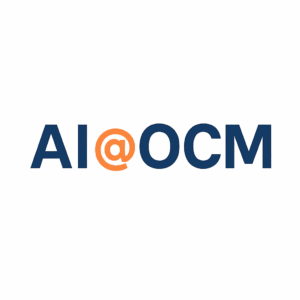As artificial intelligence (AI) continues to reshape the business landscape, its integration into existing systems poses unique challenges, particularly in the realm of vendor management. The implementation of new AI tools within organizations not only revolutionizes operational processes but also introduces complexities in managing vendor relationships. This blog post will explore several key challenges associated with the integration of AI tools into vendor management systems, including issues related to existing contracts, feature releases, access restrictions, data usage clarity, and more. We will also discuss how Organizational Change Management (OCM) can play a crucial role in navigating these challenges effectively.
The Challenge of Existing Contracts
One of the primary hurdles in integrating new AI tools involves the constraints set by existing contracts with vendors. Many of these agreements were drafted without considering the rapid advancements in AI technology, resulting in contracts that do not cover the new functionalities AI tools can offer. This discrepancy can lead to legal and operational challenges, as organizations strive to leverage new AI capabilities that are not explicitly included in current vendor agreements.
Addressing Contractual Gaps
Organizations must review and renegotiate contracts to include provisions for AI integrations. This process should be handled with careful consideration of the scope of AI functionalities desired and the potential impact on service delivery. OCM can facilitate this by ensuring that all stakeholders are aligned in their understanding of the new AI tools and the contractual changes required, thereby smoothing negotiations and implementation.
Feature Releases and User Base Impact
The deployment of new features through AI tools can significantly affect the user base of an organization. Vendors might release updates or new functionalities that, while potentially beneficial, could disrupt existing processes or confuse users without proper training and adaptation strategies.
Managing User Expectations and Training
To mitigate the impact of new feature releases, organizations need to employ effective change management strategies. OCM plays a vital role here by preparing the user base for upcoming changes through comprehensive training and support systems. This preparation helps in minimizing resistance and enhances the adoption of new features, ensuring that users can leverage the AI enhancements productively.
Restricting Access: A Necessity Unmet
Another challenge arises when the AI tools implemented do not have robust mechanisms to restrict access based on user roles or security requirements. This oversight can lead to unauthorized data access or misuse, posing significant security risks.
Enhancing Security Protocols
While security protocols primarily fall under the domain of IT security teams, OCM can support the seamless integration and adoption of these protocols by facilitating communication and alignment among all stakeholders. Organizational Change Management can help by ensuring that there is a clear understanding of the new security measures introduced with AI tools. Change managers can organize training sessions and informational campaigns that emphasize the importance of adhering to these security practices. Additionally, OCM can assist in the cultural adaptation necessary for these changes, encouraging a security-conscious mindset across the organization, which is crucial for the effective use of advanced AI tools.
Clarity in Data Usage by Vendors
Clarity on how data is utilized by vendors when AI tools are involved becomes increasingly crucial. Concerns about data privacy and usage policies are paramount, as misuse of data can lead to legal issues and loss of trust among customers.
Ensuring Transparency and Compliance
To overcome these challenges, OCM should ensure that data usage policies are transparent and comprehensively communicated to all relevant parties. Change managers can facilitate workshops and seminars to educate stakeholders about the importance of data security and privacy in the context of AI integration. Regular audits and reviews can also be instituted to ensure that vendors comply with the agreed-upon data usage standards.
Additional Challenges in AI Tool Integration
- Scalability Issues: As businesses grow, the AI tools must scale accordingly. This can be challenging if the vendor management system is not designed to handle scalability efficiently.
- Cultural Resistance: Employees might be resistant to adopting new technologies. OCM can help by addressing these cultural challenges through targeted communication strategies and engagement initiatives.
- Technical Incompatibilities: Sometimes, the existing IT infrastructure may not be compatible with the new AI tools, requiring substantial modifications or upgrades.
How OCM Can Help
Organizational Change Management can address these challenges by employing strategies that focus on communication, training, and stakeholder engagement. Effective OCM ensures that transitions are smooth and that all parties are on board with new implementations. By fostering an environment of continuous learning and adaptation, OCM helps organizations to not only implement new technologies but also maximize their potential benefits.
Conclusion
The integration of AI tools into vendor management systems is fraught with challenges, from contractual adjustments and feature integration to security concerns and data usage clarity. However, with the strategic application of Organizational Change Management, businesses can effectively navigate these challenges. OCM provides the necessary framework to manage change comprehensively, ensuring that the organization, its vendors, and its users move forward together in the new digital era.






